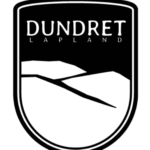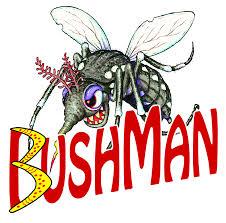Mosquitos?
Yes, there are certainly mosquitos during summertime in Gällivare. During evenings and nights they can be quite annoying but if there is just a slight wind you will not be bothered. So on the bike you will of course not notice them at all and while running or walking mosquitos are no problem either. Above the tree line on Dundret, the wind is likely to be strong enough to keep the situation calm also for the volunteers at the aid stations. However, the start takes place at midnight and the wind is often calm by lake Vassara so it is a good idea to bring some mosquito repellent just in case, especially if you are a spectator. We recommend ”Bushman” which is available in many shops in northern Sweden. ”Mygga” (mygga is Swedish for mosquito) is also good and is available in most supermarkets around here. We will have free ”Bushman” available in the transition area for the athletes to use before the race.
Is doing a full-distance triathlon as hard as it sounds?
Doing a full-distance triathlon is always hard but as with all endurance racing it depends on how hard you push yourself in relation to your own abilities. If you go all-in and really push yourself, all full-distance triathlons will take a lot out of your body. But if you pace yourself and race with your head it can still be an awesome experience. Still, there will most likely be some suffering involved during the the latter part of the race but that is really part of the essence of this sport and just makes crossing the finish line an even greater experience.
Is the Laponia Triathlon 67°N a tough or easy full-distance course?
No full-distance course is easy. But in comparison the swim will probably be pretty straight forward with no currents and typically calm water. Water temperature is normally not any issue either. The bike course is undulating with one longer uphill to Tjautjas but it is not steep. The run course is however quite a challenge with the long and steep uphill (and downhill) to the ”Åke på toppen” cabin on Dundret and the rest of the run also being undulating. In comparison the Laponia Triathlon is harder than the Ironman in Kalmar but not as hard as the Norseman course.
Air temperature during the race?
On the bike, temperatures typically drops to about 5 degrees Celsius. This means that you will need some more clothes than your tri race suit. On the morning and day time temperatures will rise but since the run course takes you up the Dundret mountain you have to be prepared for colder and more windy conditions than you might expect from the conditions at the foot of the mountain.
Which water temperature can we expect on race-day?
Water temperatures can vary a lot up here in northern Sweden. Depending on how fast the snow from the winter is melting from the surrounding mountains it can take several weeks longer than normal for the lakes to become reasonably warm. Lake Vassara is however not very deep so it warms pretty quickly and water temperature on race day will probably be about 16-18 degrees Celsius.
Midnight sun?
The midnight sun is a natural phenomenon that occurs in the local summer months in places north of the Arctic Circle or south of the Antarctic Circle. At the time of Laponia Triathlon in Gällivare, the sun is visible for the full 24 hours, given fair weather. Even if the weather is cloudy there is however daylight also at night so there is no need for any lights on the bike.
Any wildlife to be aware of?
Most likely you will see reindeers on the bike leg. They typically run along the road for a while and can be quite unpredictable in their choice of direction and movement. If you see a reindeer on the road ahead or next to the road, slow down and pay attention while passing slowly.
Bears and moose are also frequent and passing a moose requires about the same caution as with the reindeers. Encounters with bears are very uncommon but if you are lucky enough to see one, let´s hope it is on comfortable distance…
I’ve heard a triathlon swim start can be overwhelming. What do I need to do to prepare?
It does not take that many triathletes together in the swim start to create a quite stressful environment for the first hundred meters of the swim. You need to pick a position in the start field that reflects your swim capacity. If you position yourself too far in the front you risk being pushed down into the water by athletes coming from behind. Better then to be on the safe side and stand a bit further back and instead pass athletes. In general you need to mentally focus on that the first couple of minutes is going to be stressful and then it will be much easier to handle. You can also prepare the hard core style like in this video.
How can I connect with other triathletes and find training partners?
There are plenty of triathlon clubs around Sweden. In Gällivare we are a group of people with different goals training together in the sports club Gällivare Endurance. Find us on Facebook.
Will I need a lot of special gear?
All you really need is a swimsuit, bike, bike helmet and running shoes. There’s plenty of additional gear for each leg of the sport, and how much you buy depends on your goals and commitment. We recommend starting with high-quality basics and adding piece by piece as you get deeper into your training.
What do I need to pack for the race
Read Sofie’s blog post about packing for race-day.
How do I figure out what to eat and drink during a full distance triathlon?
First of all, what works for other athletes may not work for you. Nutrition during long distance triathlons can be quite tricky to figure out and there is no magic formula that will work for everyone. It is important to try your nutrition plan during long training sessions on your bike, preferably in a brick pass where you also run after the bike.
A rough guide is that your body will be able to digest about 300 kcal/hour but the calories must be easily digestible so you should avoid fibre and go for sugar. Sports drinks, gels and maybe energy bars or chocolate bars (without nuts). It is easier to digest bars during the bike than during the run so many athletes rely on gels and sports drinks during the run.
Coke (cola drinks) is served at most long distance triathlons during the run and some times also during the latter part of the bike. Coke contains plain sugars which are very easy for the body to absorb. If nothing else works, coke is likely to do the trick. Once you start taking in coke you will however have to continue for the rest of the race. You will otherwise risk having a heavy dip in blood sugars causing a notable dip in body performance.
You will also have to pay attention to electrolytes and many sports drinks have a well balanced formula of calories and electrolytes. If you drink more water than sports drinks you may have to consider taking on electrolytes from other sources such as tablets, gels or bars. The amount of electrolytes spent while sweating is very individual and also depends a lot on the weather conditions.
There are plenty to read about nutrition during long distance triathlon on the web. Google on words such as ”race-day”, ”nutrition”, ”ironman” and ”electrolytes”. Good luck!





